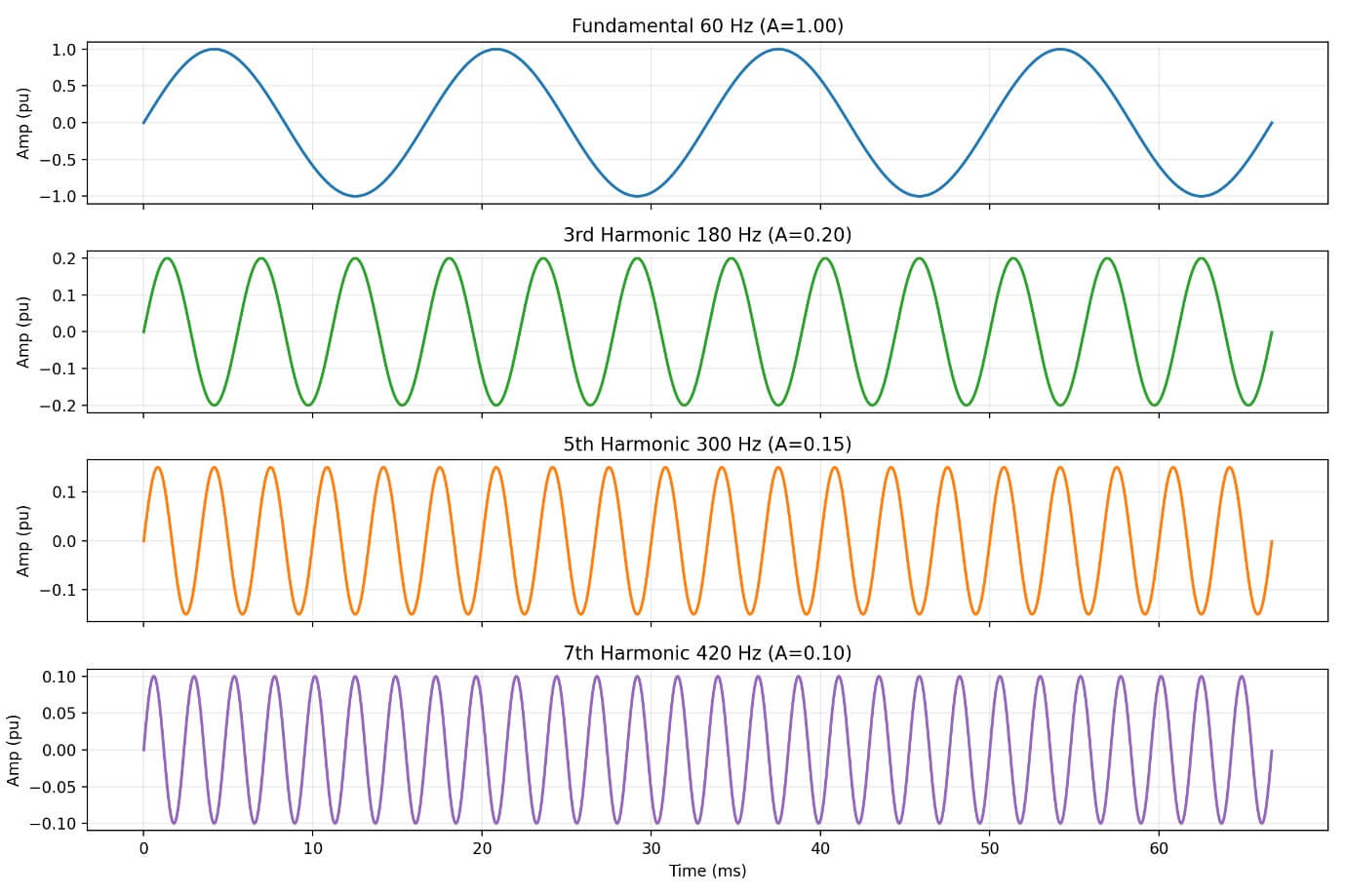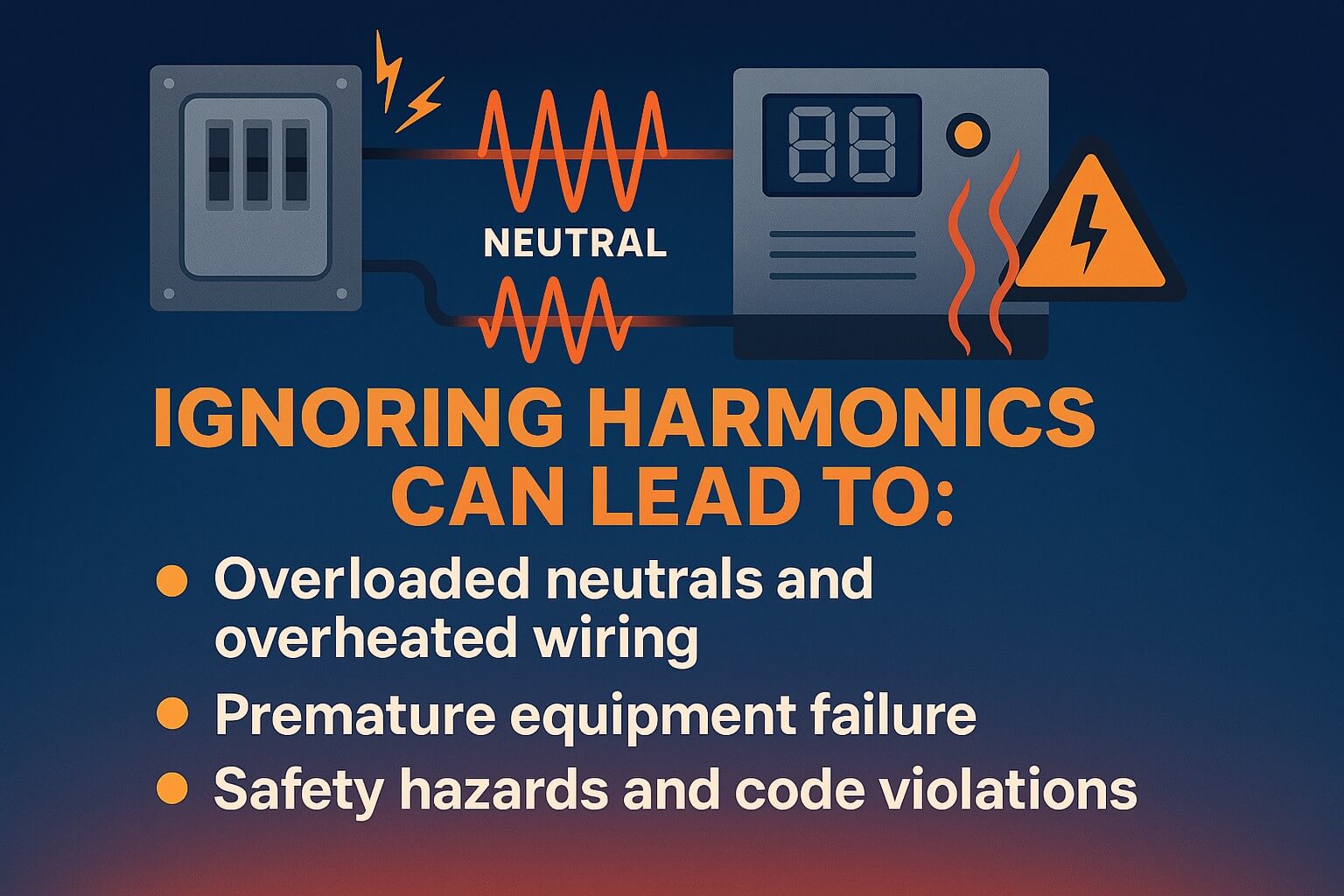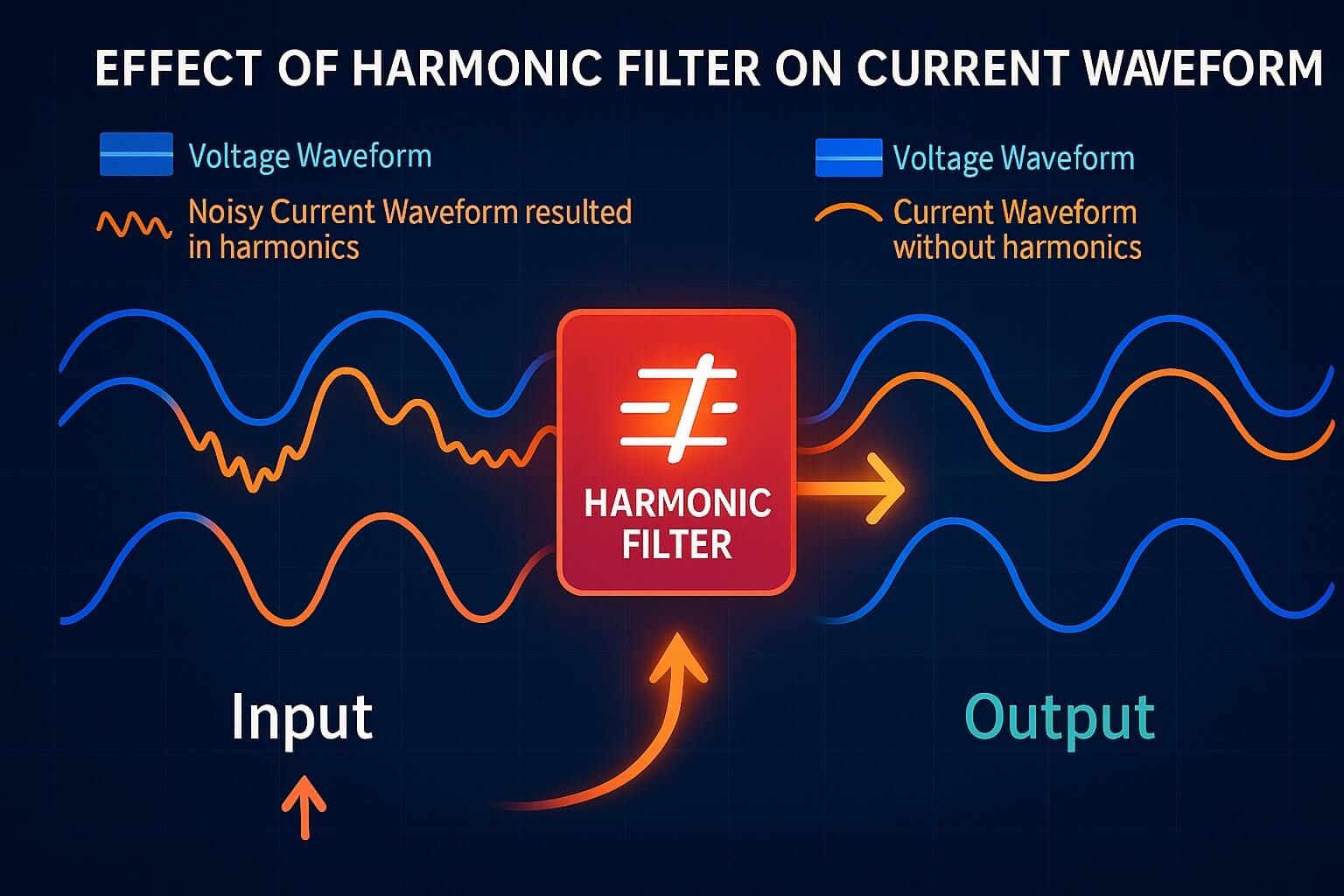
Harmonics in 60 Hz Electrical...
October 23, 2025
Modern electrical systems are increasingly populated with non-linear loads—such as variable frequency drives (VFDs), LED lighting, UPS systems, and computers. While these technologies improve efficiency and control, they introduce a hidden challenge: harmonics.
In an ideal AC power system, voltage and current waveforms are pure sinusoids at the fundamental frequency—60 Hz in North America. However, non-linear loads draw current in abrupt pulses rather than smooth waves, introducing additional frequency components called harmonics.
Harmonics are integer multiples of the fundamental frequency:
These harmonics combine with the fundamental waveform, creating distortion that can lead to overheating, equipment malfunction, and energy losses.

The National Electrical Code (NEC) does not define harmonics explicitly, but it addresses their effects in several ways:
Key NEC References

While NEC focuses on safety, IEEE 519-2022 sets power quality limits:
Compliance with IEEE 519 is considered best practice for maintaining system reliability and avoiding utility penalties.
Active and passive harmonic filters are used in electrical systems to mitigate harmonics—unwanted frequencies that distort the waveform of electrical signals, typically caused by non-linear loads like variable frequency drives (VFDs), computers, and LED lighting.
Here’s a breakdown of both types:

Harmonics in 60 Hz systems are a growing concern as non-linear loads dominate modern facilities. While the NEC addresses safety aspects like neutral sizing, power quality compliance falls under IEEE 519 and good engineering practice. Implementing harmonic mitigation strategies ensures safety, reliability, and efficiency.